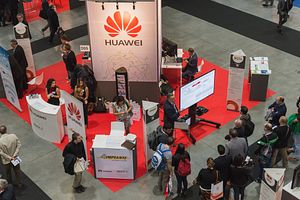China and the U.S. have been negotiating a bilateral investment treaty (BIT) for years, getting closer after exchanging revised offers just before President Xi Jinping’s visit to D.C. next week. The BIT, which some believe will be a priority discussion topic between the two presidents and may even be concluded, would expand American firms’ access to investing in China and do the same for Chinese firms investing in the U.S. While American firms can gain from obtaining access to China’s numerous closed sectors, Chinese firms can gain from investing in a more transparent and stable environment.
BIT negotiation has been a slow process because it has not been at the top of the political agenda for some time, reentering substantial talks at the 2013 China-U.S. Strategic and Economic Dialogue. In addition, opening up investment poses both economic and political security challenges. This is because companies with key technologies may leak knowledge to the foreign country, crowd out domestic firms, or use the invested firm to spy on local activities. The negative list associated with the BIT prevents firms from investing in critical sectors, but the aim is to whittle down the negative list to expand the playing ground for investors.
China’s sectors most closed to foreign direct investment include agriculture, fishing, transportation, media, telecommunications, and financial services. Opening some Chinese sectors would remove a major hurdle for American businesses. The BIT may also address merger proposals by foreign firms in China, which have incurred significant conditionality in proceeding with merger events, and competition policy, in order to ensure a more level playing field between Chinese and U.S. firms in China.
China’s perception of the investment process in the U.S. is that much of it is subject to the opaque approval process of the Committee on Foreign Investment in the U.S. Justification for the imposition of barriers to Chinese investment in the U.S. have been made on the grounds of national security. A BIT would hopefully provide more transparency in the investment process and reduce hurdles to investment.
The U.S.-China BIT represents two trends – one in the international arena toward increasing global trade and investment ties, and one in China of expanding outbound investment under its “Go Out” policy. Global trade and investment ties that are new or under negotiation include the Trans Pacific Partnership, the Asian Infrastructure Investment Bank, the BRICS or New Development Bank, the Australia-China Free Trade Agreement, and the Regional Comprehensive Economic Partnership, among others. As part of China’s “Go Out” policy started in 1999, Chinese investment abroad has expanded in recent years to outbound direct investment.
BITs are generally conducive to increasing direct investment abroad, since they protect firms going abroad against expropriation by a foreign government. Caveats may exist for developing countries that would otherwise benefit from the protection of nascent industries or more equal compensation for land expropriation between domestic and foreign firms. As China has more industries closed to foreign investment and is continuing to develop, the country has potentially more to lose from signing the treaty.
Still, if a balanced BIT can be concluded, both nations stand to gain. The U.S. would encounter more profit opportunities in China, while China would further its agenda to “Go Out” and promote maturation of its economy. Many analysts have anticipated that the treaty would be concluded this month; we will watch for signs of this during Xi’s Washington visit next week.

































